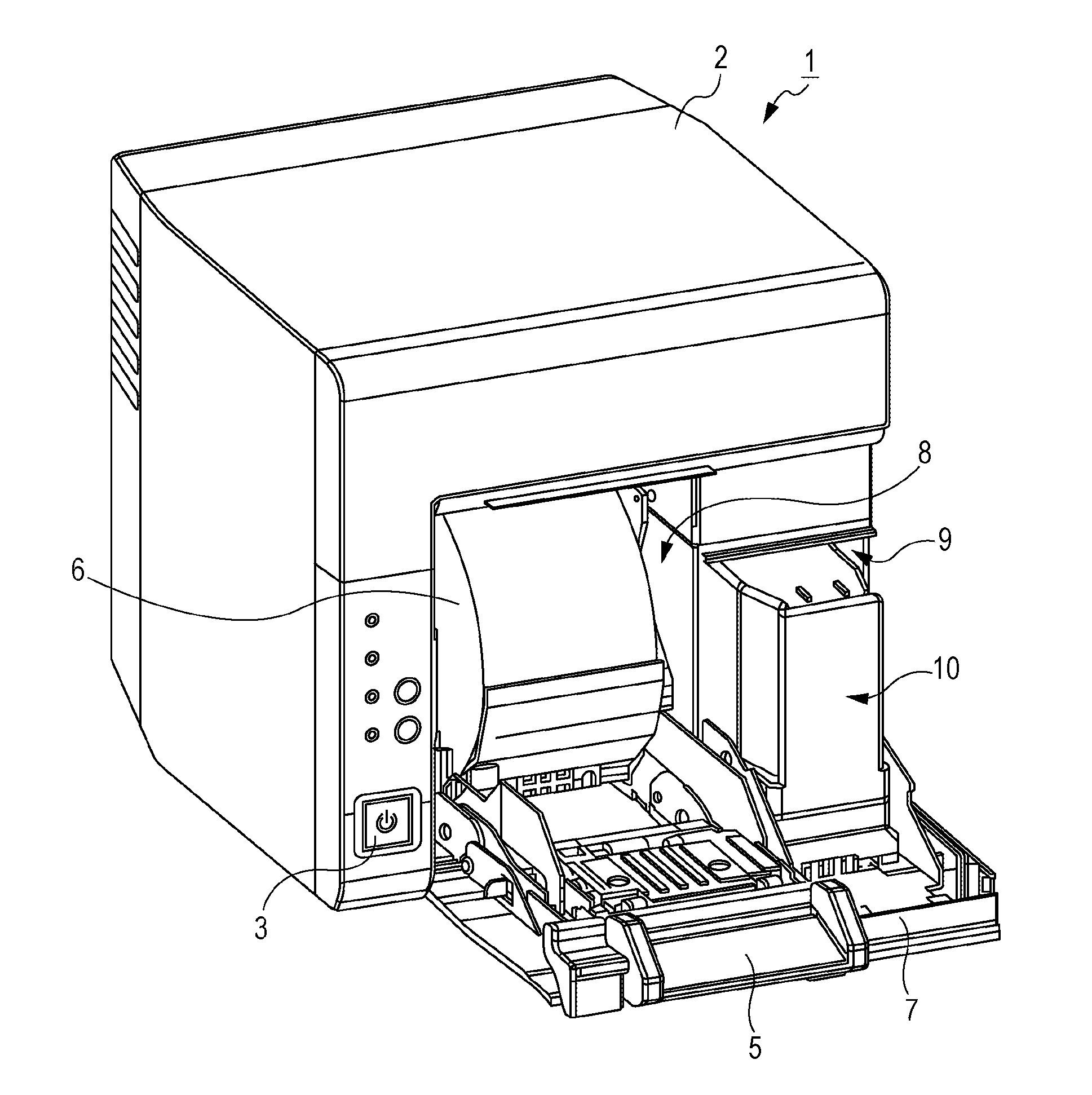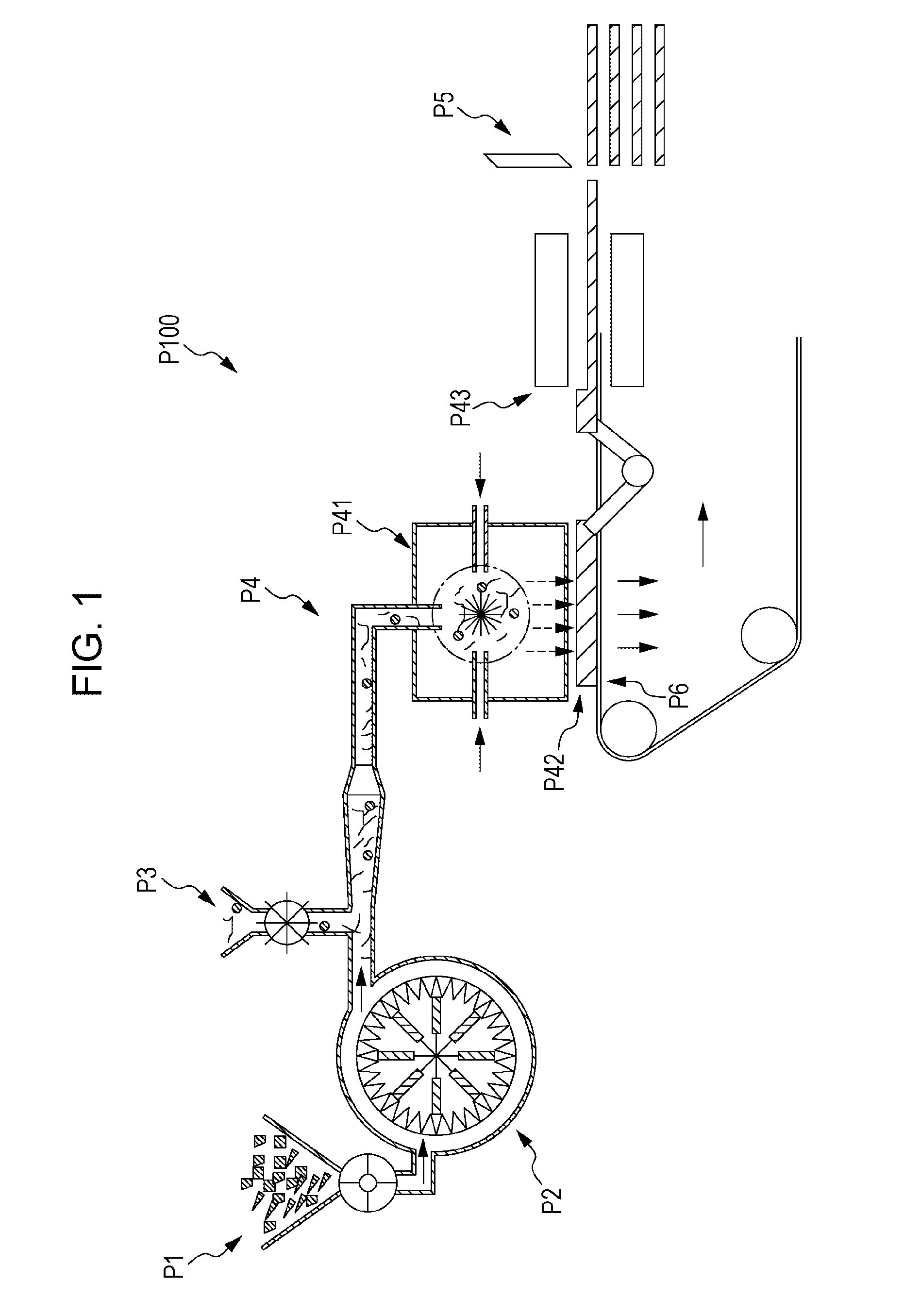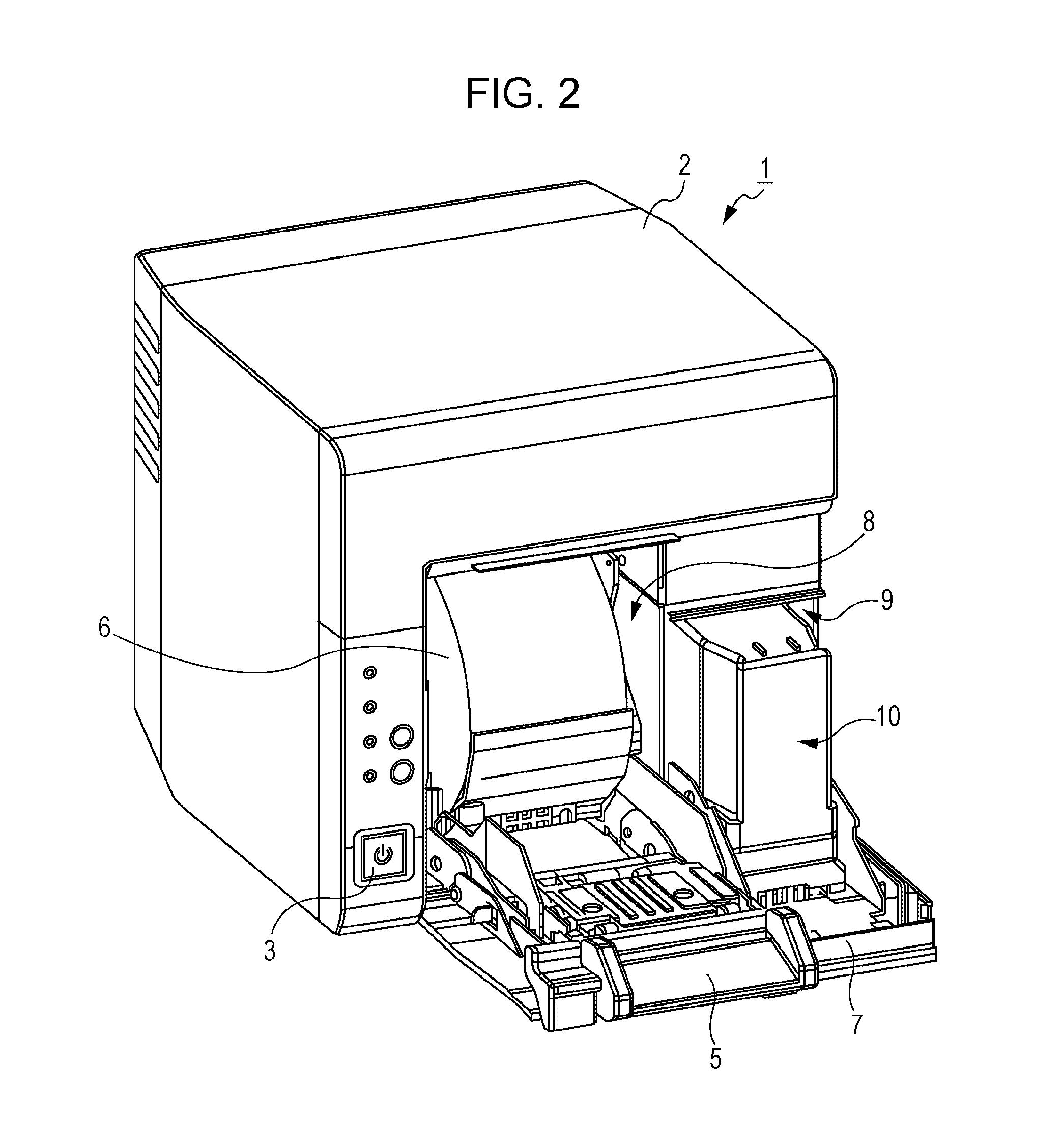Liquid absorbent and printer
- Summary
- Abstract
- Description
- Claims
- Application Information
AI Technical Summary
Benefits of technology
Problems solved by technology
Method used
Image
Examples
embodiment 1
1. Production of Liquid Absorbents
[0197]Liquid absorbents were produced in the following way.
example 1
[0198]A production system of the type illustrated in FIG. 1 was prepared.
Refining
[0199]First, waste paper (the cellulose fiber source) fed from the cellulose fiber feeding unit was refined using refining equipment (in-house produced equipment) as the refining unit.
Mixing
[0200]The waste paper refined at the refining unit (cellulose fiber) was transported while a mixture of the heat-fusible material and the flame-retardant material was fed by the mixture feeding unit. A mixture of the cellulose fiber, the heat-fusible material, and the flame-retardant material was obtained in this way.
Forming
[0201]The obtained mixture was put into the mixing section of the forming unit, and the ingredients were stirred using a stirring gas.
[0202]The mixture was then placed on the transporting unit, which was made of a breathable nonwoven fabric, and sucked onto the transporting unit. By this process the mixture was brought into close contact with the transporting unit and formed into a sheet.
[0203]The...
embodiment 2
1. Production of Liquid Absorbents
[0228]Liquid absorbents were obtained by a production method similar to that for Embodiment 1 using the materials specified in Table 3.
[0229]The heat-fusible material in the liquid absorbents was a mixture of polyester and polyethylene in the form of fiber, and its average fineness and average stable length were 1.7 dtex and 3 mm, respectively. The volume-weighted average particle diameter of the flame-retardant material was measured using HORIBA LA-910.
TABLE 3Composition of the liquid absorbentFlame-retardant materialCelluloseAveragefiberHeat-fusible materialparticleAmountAmountdiameterAmount[wt %]Composition[wt %]Composition[μm][wt %]Example 675Polyester / 15Melamine410polyethylenepolyphosphateExample 775Polyester / 15Ammonium1010polyethylenephosphateExample 875Polyester / 15Aluminum810polyethylenehydroxideComparative75Polyester / 15Melamine1510Example 6polyethylenepolyphosphateComparative75Polyester / 15Ammonium2010Example 7polyethylenephosphateComparative...
PUM
| Property | Measurement | Unit |
|---|---|---|
| Percent by mass | aaaaa | aaaaa |
| Percent by mass | aaaaa | aaaaa |
| Percent by mass | aaaaa | aaaaa |
Abstract
Description
Claims
Application Information
 Login to View More
Login to View More - R&D
- Intellectual Property
- Life Sciences
- Materials
- Tech Scout
- Unparalleled Data Quality
- Higher Quality Content
- 60% Fewer Hallucinations
Browse by: Latest US Patents, China's latest patents, Technical Efficacy Thesaurus, Application Domain, Technology Topic, Popular Technical Reports.
© 2025 PatSnap. All rights reserved.Legal|Privacy policy|Modern Slavery Act Transparency Statement|Sitemap|About US| Contact US: help@patsnap.com



